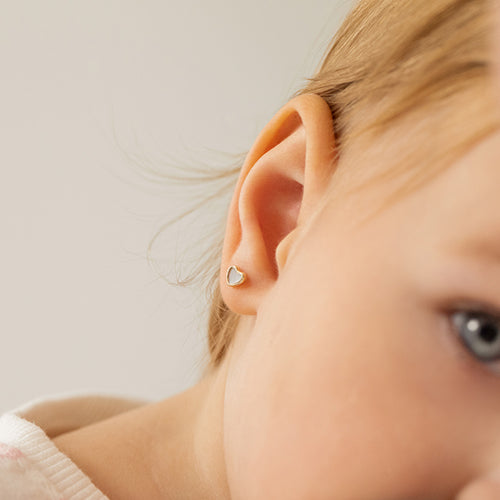Getting Babies’ Ears Pierced: A Comprehensive Guide for Parents

As loving parents, we treasure each milestone in our little one’s life. Getting their ears pierced can be one of those cherished moments. Before you go ahead, let’s equip you with all the information you need to make this a safe and memorable experience.
Decoding the Perfect Age for Ear Piercing
When it comes to ear piercing, there isn't a one-size-fits-all age. It's a personal decision that varies amongst families.
Benefits of Early Ear Piercing
Sentimental Value: For many, it's a rite of passage or family tradition.
Less Maintenance: Young babies are less likely to fiddle with their earrings.
Reasons to Wait
Child’s Consent: Some parents prefer to wait until the child can have a say.
Easy Aftercare: Older children can take part in the aftercare process.
Safety and Hygiene is Key
It’s essential to ensure that the piercing process is safe and hygienic.
Picking the Right Place
- Look for places that have experience with piercing babies’ ears.
- Ensure that they use sterile equipment.
- Check if they offer hypoallergenic earrings.
Adorning Those Tiny Ears: Earring Selection Tips
- Material Matters: Opt for hypoallergenic materials like gold or surgical steel.
- Keep it Simple: Go for small, snug designs with smooth edges to prevent any snags or pulls.
Aftercare: Safeguarding Your Baby's Delicate Ears
Establish a Cleaning Routine
- Clean your baby's ears gently with a cotton ball dipped in a warm saline solution.
- Don’t forget to rotate the earrings softly.
Signs of Trouble
Be alert for signs of infection such as redness, swelling, or discharge. If you notice these, it’s best to consult a pediatrician.
Healing Timeline: Patience is a Virtue
Earlobes generally take about 4-6 weeks to heal. It’s advisable to leave the earrings in for at least six months to prevent the holes from closing.
Making the Decision: Your Baby, Your Choice
Remember, the decision to pierce your baby's ears is a deeply personal one. Consider all aspects and make a choice that feels right for your family.
Questions and Answers for Parents
Q: How do I care for my baby's ears after piercing?
Q: What are the signs of infection after ear piercing?
Leave a comment
Comments will be approved before showing up.
Previous Article
bracelet-and-necklaces-sizes-for-babies-and-kidsNext Article
birthstone-chart-and-their-meaning




